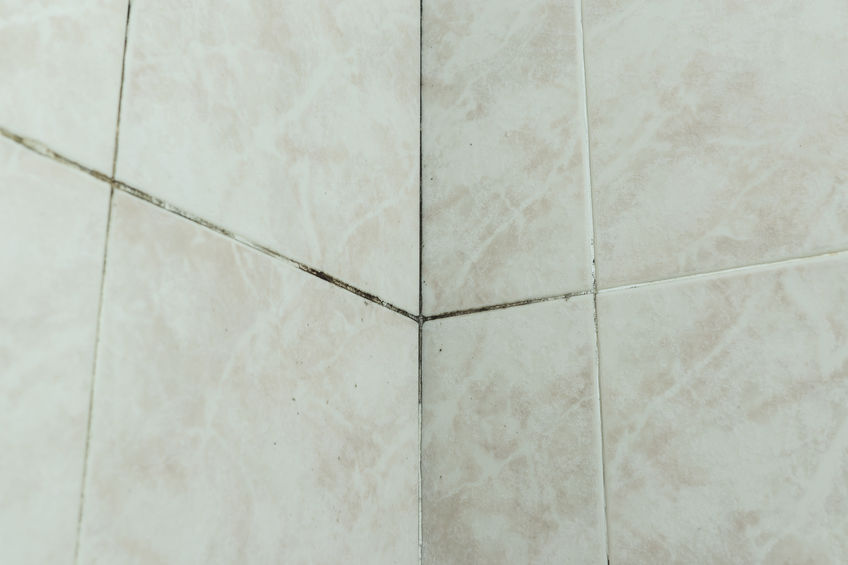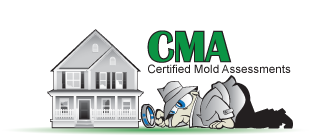 Mold is a type of fungus that spawns from very small spores that normally float in the air. It can grow anywhere provided there is moisture and suitable temperatures. It thrives mostly in damp places especially behind a bathroom’s drywall, which is high in cellulose and has a lot of water and possible leakages. This article looks at the best ways to know you have mold growing behind a bathroom’s drywall.
Mold is a type of fungus that spawns from very small spores that normally float in the air. It can grow anywhere provided there is moisture and suitable temperatures. It thrives mostly in damp places especially behind a bathroom’s drywall, which is high in cellulose and has a lot of water and possible leakages. This article looks at the best ways to know you have mold growing behind a bathroom’s drywall.
- Visible Mold
Often, mold is visible in the grout lines in your bathroom. In order to distinguish mold from dirt, you can do a test using household bleach. Pour a few drops of the bleach in the dark spots along the grout lines. If the dark areas lighten after a few minutes, then you certainly have mold. If it remains completely dark, then you have dirt and not mold. This is a good indicator of whether you have mold in your bathroom’s drywall.
In addition to this, if you see mold growing in the basement, then it is very probable that some of it is growing behind the drywall. You can therefore proceed to call in a professional to confirm the presence of mold and have it removed.
- Leakages
Mold thrives on possible water leakages. Dark damp spots are a very good indicator of mold emanating from water leaking from the pipes. A drywall is an absorbent material hence it could be affected by such water leakages. The presence of such mold near the bathroom pipes and plumbing fixtures due to a nearby leak could be a great indicator that the mold might actually be present and thriving behind a bathroom’s drywall.
- Peeling Paint, Bulging, and Odors
If you happen to see any spots of mold on the wall, it could be a very good indicator that there is actually much more mold growing behind the drywall in your bathroom. Peeling paint is also a god telltale sign of mold growth. Another sign to watch out for is odors coming from the drywall, which will clearly give a sign that there is mold growing in there.
How to Check For Mold behind a Bathroom’s Drywall
- Using a Fiber Optic Camera
This entails drilling a small hole in the drywall and inserting a small camera to see if you can see any mold growing behind the bathroom’s drywall.
- Using a Home Mold Test Kit
This process involves cutting a small hole in the wall and using a mold test kit to check whether there is any mold thriving in the moisture behind the bathroom’s drywall. You can use a screwdriver or a very sharp tool to probe into the highly suspected area. A mold test kit helps to determine whether there is any mold growing behind the drywall and the type of the mold as well. If mold is detected, you should take the needed precautions to have it eliminated.
- Inspecting the HVAC’s Ductwork
If the HVAC unit in your bathroom is not operating properly, it could cause mold to grow behind the drywall. To avoid any issues, you should therefore regularly inspect the ductwork, as a test for mold in the bathroom since it could be the actual cause of the mold thriving and taking root. This is because moisture condenses, making water to form on the ducts. Ultimately, water saturates the drywall and the mold grows vigorously. The ductwork therefore ought to be inspected regularly as a test for the mold behind a bathroom drywall.
- Using a Professional Mold Inspector
Consider calling in a professional to establish whether there is any mold in the drywall. Experts have a lot of experience, knowledge and expertise, meaning they can easily be able to trace the mold hiding behind the walls and actually find it. They use advanced tools such as moisture meters and fiber optics, and can thus easily detect whether there is any mold hidden behind the bathroom’s drywall.
The existence of mold in the drywall not only destroys the structural integrity of your bathroom but can also have negative health effects on your health and that of your loved ones. It thus makes a lot of sense to get rid of any mold growing behind the bathroom’s drywall before it turns out to be a real menace.
One issue about all this is that mold in the drywall does not only growing on the surface but inside the material. It is therefore not easy to trace and truly establish whether there is actually any mold growing behind the bathroom’s drywall. You should thus consider implementing the aforementioned tips to know whether you have any mold flourishing behind the drywall. After verifying that, you can now proceed and start thinking about the removal of the mold and the remediation process.
